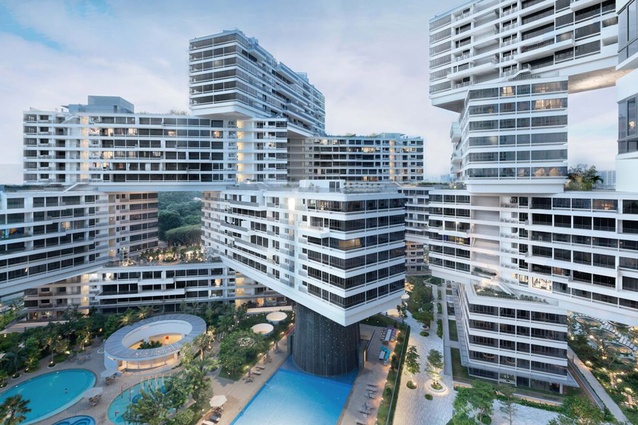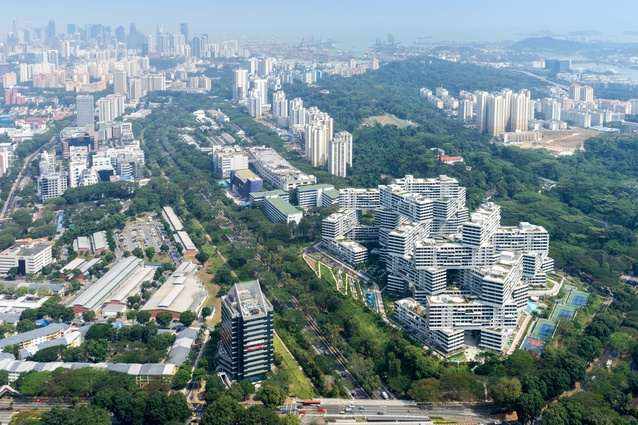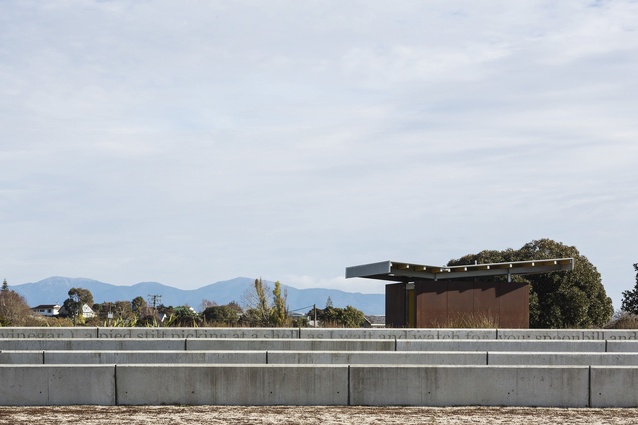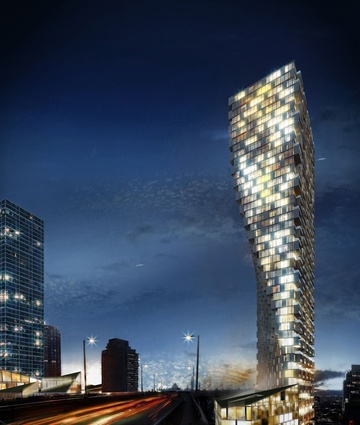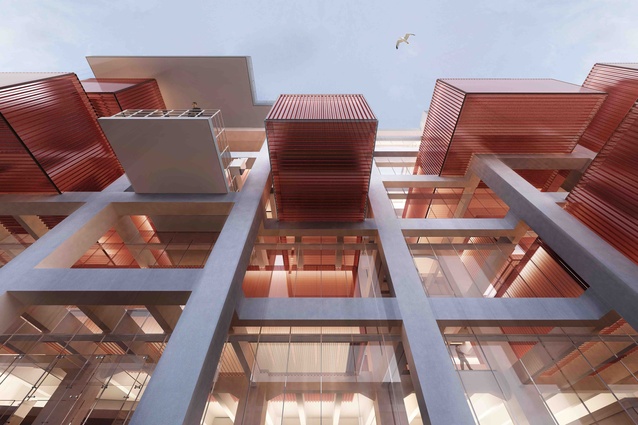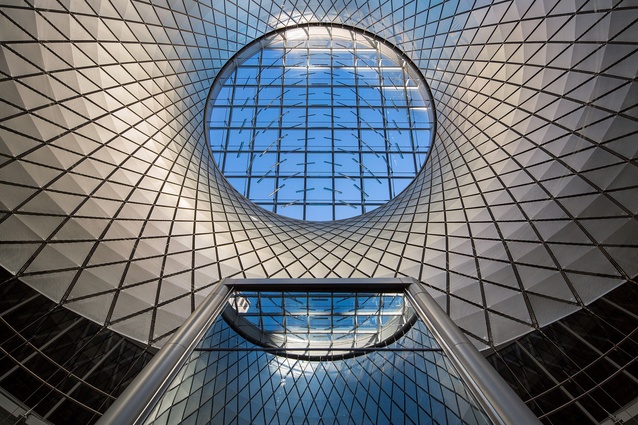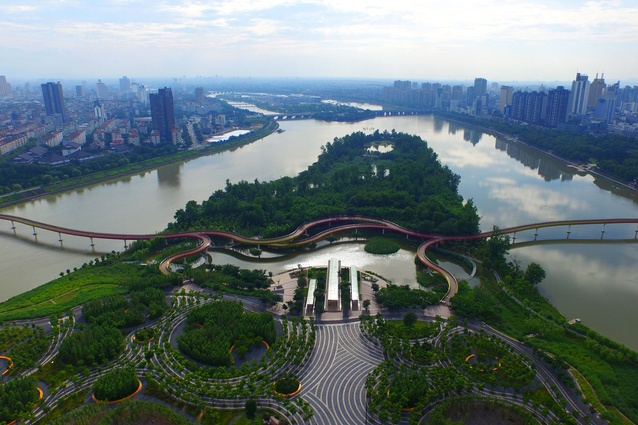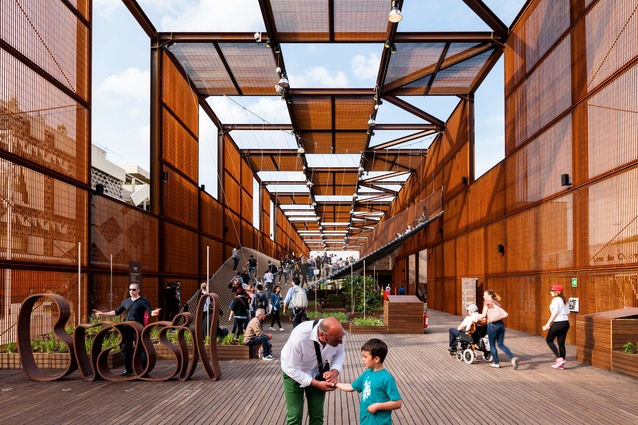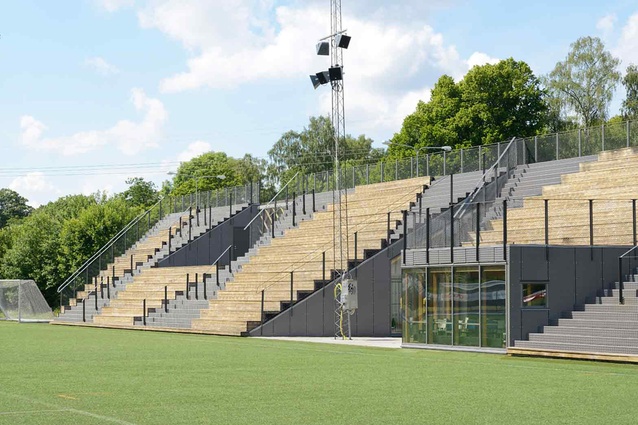World Building of the Year
The Interlace housing scheme in Singapore, designed by Ole Scheeren of OMA/Buro Ole Scheeren, has won the coveted World Building of the Year award at the 2015 World Architecture Festival (WAF).
The Interlace is an intricate network of living and social spaces with 31 apartment blocks, each six storeys tall and 70 meters long. Stacked in hexagonal arrangements, the scheme creates a matrix of internal and external environments that forge a myriad of shared and private outdoor spaces on multiple levels.
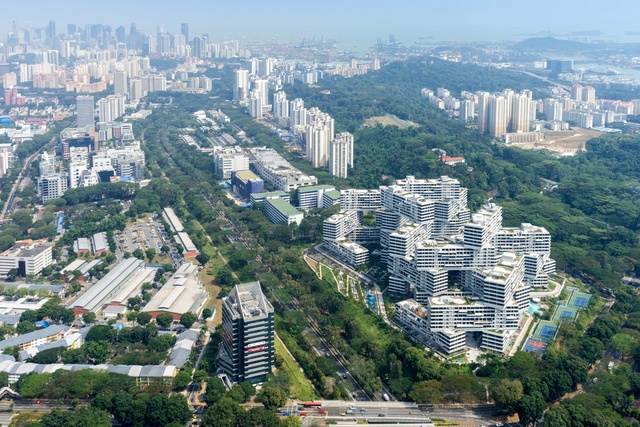
World Architecture Festival director Paul Finch lauded the project, saying “The Interlace is blazing a trail with an example of bold, contemporary architectural thinking. The project presents an alternative way of thinking about developments which might otherwise become generic tower clusters”.
A stella lineup of some of New Zealand’s finest architects presented their projects but only one firm was honoured. Nelson-based Irving Smith Jack Architects (ISJ) was highly commended for Mapua Waterfront Park in the production, energy and recycling category. ISJ director Jeremy Smith presented the project to the judges and later said, “It was exciting enough just to be amongst the quality New Zealand work selected by WAF to be presented… humbling to then be awarded at this international level. When the recognition comes from a jury of the calibre of convenor Chris Bosse, and in a category with a global spread of projects from eastern and western Europe, Asia, Australia and South America… shall I just say we are enjoying it all!”
Justine Harvey, editor of Architecture New Zealand, attended the festival as a judge in the Houses category and commented, “It is wonderful that such a wonderful community project in Nelson has been honoured on the international stage and we wish ISJ a huge congratulations for their high commendation.”
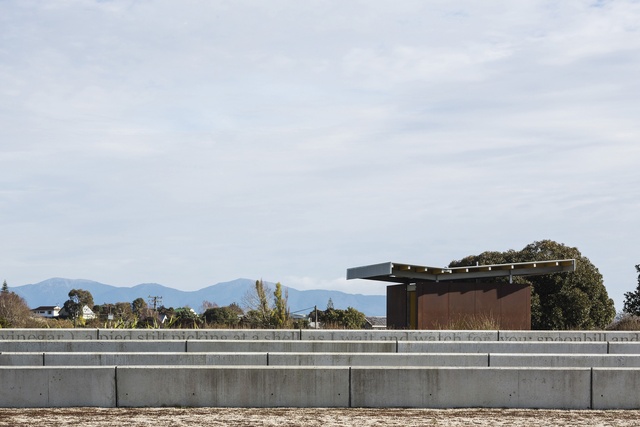
Twelve New Zealand architects attended the three-day event, held at the Marina Bay Conference Centre in Singapore from 4-6 November, representing 12 projects located across Aotearoa. Harvey added, “It would have been great for our architects to have walked away with more awards but, with such stiff competition between the world’s leading architects, it’s really just the nature of the beast.
“There are so many great projects up for awards that the odds of winning a category prize are slim and the supreme award is even more elusive. But New Zealand has been fortunate to take away a number of awards in recent years, including Auckland Art Gallery Toi o Tamaki winning the World Building of the Year in 2013, so we should be really proud of the presentations given by our architects and of ISJ for their honour.
“For me, what was particularly special about New Zealand’s contribution is that our architects eloquently explained an approach to architecture that is rarely seen elsewhere in the world, with respect for our indigenous culture, our land, context and drawing on Maori cosmology and even concepts around ley lines in the cases of Te Kura Kaupapa Maori o Ngati Kahungunu o Te Wairoa by RTA Studio and Rore Kahu – Marsden Cross Heritage Centre by Cheshire Architects.
“This approach is meaningful and, often, the projects are developed on very limited budgets. I did wonder if some of the judges possibly found these concepts a little hard to grasp; for example, the creation story of Rangi and Papa is deeply ingrained in the New Zealand psyche but trying to convey that within a short presentation is near impossible.
“But, with frameworks like the Te Arangi Design Principles in place to help guide architects and the industry becoming more focused on meeting the needs of Maori clients, in time, I think, New Zealand architects will be seen to be pushing a new way forward for architecture. My hope is that this holistic approach is not only utilised by a small number of our architects but that it becomes mainstream as the way of designing and building in Aotearoa.”
More information on the winners can be found here.

